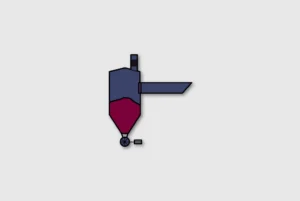When you do a risk evaluation on any aspect of your processes, you consider the consequences of a hazard (the harm that can be done) and the likelihood or frequency of harm coming about. If you believe the risk is too high, then you either reduce the hazard or reduce its likelihood.
It is worth remembering that risk assessments are what all health and safety law in the UK or Europe requires. The risk evaluation determines the level of risk, but the risk assessment is a decision-making process. Once we know the level of risk we need to decide if we should do more to reduce the risk – either by reducing the hazard, or putting in place more precautionary measures to reduce the likelihood.
It stands to reason, therefore, that if a hazard has not been identified, then there is no way that an organisation can assess potential risk from that particular hazard. In addition, you will not have put in place any precautionary measures to reduce the likelihood – why would you – you do not think you have a hazard.
It is imperative therefore that all hazards are identified. Hazards can be inherent within a substance (it’s classified as flammable or toxic for example), or hazards can be generated within a process, either under normal conditions (for example, the reaction of an acid with bleach (both classified as corrosive) can generate chlorine (a highly toxic gas); or generated under abnormal conditions (so called excursions). An example of this was what happened in the Seveso incident – benign low hazard materials were reacted to form another low hazard material. Loss of heating control, however, resulted in the exothermic reaction running away, increasing temperature and pressure further. The company had recognised that exothermic runaway could occur and had installed explosion relief to vent the contents of the reactor safely. What they hadn’t realised was that under the excursion of high temperature and pressure the chemistry changed – now forming the highly toxic dioxins which were spread across the neighbouring countryside and population.
There are robust and systematic hazard identification methodologies employed in the process industries, such as HAZID, HAZOP, LOPA etc to help us gain an understanding of the hazards present on our site. They need to be used by those ‘skilled in the art’ of carrying out such assessments and require a team of people who understand the process conditions etc.
In some instances, it is possible to calculate the effect of chemical reaction hazards, but in many cases, it is specific testing where your processes can be more fully understood.
Many incidents continue to occur because we simply don’t understand the hazards or potential hazards – we don’t fully understand our processes.
Chemical reactions are driven by thermodynamics (the energy involved in making and breaking bonds) and kinetics – how quickly the reaction occurs. In many instances, it is as simple as controlling heat inputs and outputs. The problem is that exothermic reactions generate heat exponentially, and heat losses from a cooled reactor system are generally linear.
Many times, the exothermicity of reactions isn’t seen during laboratory studies – primarily because the heat losses from glassware are high, and there is a large surface area versus volume relationship in small-scale apparatus. Once we scale up to industrial size proportions, the surface area to volume relationship significantly changes, resulting in lower heat losses. Any heat generated from the reaction mass remains in the contents, raising temperatures. Once the rate of heat generation outweighs the heat losses, the reaction will run away – generating higher temperatures and pressures.
It’s a similar phenomenon with combustible dust and again is essentially related to the surface area versus volume relationship. Combustion is simply an exothermic chemical reaction – the reaction of a fuel with air/oxygen. The thermodynamics of the process generally requires an ignition source to be present; but once the reaction starts the kinetics will be driven by the surface area to volume relationship – the greater the surface area of the powder, the finer the powder or dust. A simple example is solid iron. An iron bar will not burn or combust. Grinding it down to produce iron filings results in combustion – remember at school the joy we got by pouring iron filings into a Bunsen burner flame? Grinding the iron into a very fine powder, essentially produces a spontaneously combustible solid – simply exposing the powder to air will result in an ignition – the fine powder cannot dissipate the heat generated between the oxygen/air with the iron particles.
For substances classified as dangerous, the MSDS gives us good information on the hazards of a particular substance. But, for combustible powders, the MSDS typically just states that the powder may be combustible. We don’t get the hazard warning triangles on the container. We need to get a grip on how and when the powder or dust may combust – how much energy do we need to ignite the dust? how quickly does the reaction (and hence pressure rise) develop? Without this knowledge, we can’t ensure effective precautionary measures are put in place. The fire and explosion properties of combustible dusts cannot be calculated, they must be tested in appropriate laboratory equipment according to appropriate standards.
As an industry, we are pretty good at designing our normal processes. Part of this design is the development of safe operating limits – if we keep our process conditions within certain limits, not only will the process deliver the end products we require, but also do it safely. We employ alarms and trip systems etc to alert us when the process starts to impinge on the safe operating limits. However, what we are not particularly good at is fully understanding what might happen if we have excursions beyond the safe operating limits.
Ultimately, those involved in the risk assessment and hazard identification operation need to know not only about normal circumstances but also about how their materials and chemistry behave in abnormal circumstances.
There are many situations in which the relationship between a risk assessment and materials and chemistry testing needs further thought, to ensure that a robust, systematic and repeatable risk assessment can be completed.
Below are several questions that clients discuss with us relating to the use of risk assessment.
The raw material suppliers have changed but it’s the same process, so it is safe.
If raw materials have changed, then the process may also have changed. There may be the need for new controls to be added to the process design if there are additional contaminants, concentrations, particle size distribution and moisture content. Even a minute difference could negatively affect a process.
Any input changes, not just to substances and their form, but to batch size processing, process parameters etc can all have significant impacts on processing systems.
A 10-degree increase in reaction temperature, for example, tends to contribute to two times the reaction rate. This can represent a significant increase in reaction rate for a relatively small change in processing temperature. The associated incidents concerning runaways and decompositions, as a result of scale-up activities, change in batch temperatures or increasing the feed rate, all have an impact. If systems are not designed to cope with these changes, problems can arise.
Essentially, if suppliers are changed, new raw materials should go through a management of change process. It is paramount that the effects of materials are known, which may mean that additional testing must be undertaken. The management of change system should identify if it is necessary to add a mitigation layer, but before specific mitigation is conveniently introduced, a material must be categorised, via adequate testing.
Test results inform the assessment, and measures can be identified and put in place to bring the process back into a safe state, and fulfil company requirements and UK law. Even if the change is merely in the process sourcing, and not the actual process itself, appropriate testing utilising the new raw material is required to assure acceptable comparability.
We’ve got our supplier’s Material Safety Data Sheet (MSDS), and that’s all the information we need to be able to run a safe process.
It’s pretty common that most material safety data sheets, especially for solid materials, will contain a common statement that the solid or dust may undergo combustion.
When considering the material safety data sheet, it is important to think about how a process could be correctly designed using such a vague piece of information. This, again, depends on the goal of the process.
Most materials will undergo combustion. As humans, we’re not classified as flammable, but we can burn, we are combustible. Such questions as the size of the ignition source, the ability to fulfil the fire triangle or the explosion pentagon should all be considered.
It’s also rare that an MSDS will include dust explosion data, ignition energy data, and the conductibility or resistivity of the substances. The most that is offered is usually a list of things that may be considered incompatible, and this data is too vague to help design processes or to ensure that they are safe.
In recognition of these material data sheet failings, there have been changes in legislation, at the EU level. The EU commission regulation, specifically Annex II of REACH and the associated standards requires additional data to be placed on safety data sheets. As a user, data such as chemical reaction hazards, dust explosibility characteristics, electrostatics, charge generation and conductivity should now be apparent.
Along with other improvements, this new revision will also call for the reporting of information on nanomaterials, compounds, and mixtures with endocrine-disrupting capabilities, as well as the addition of Specific Concentration Limits (SCLs), M-factors, and Acute Toxicity Estimates.
This change in regulations and standards came into effect in January 2021. There is a two-year transition period to get the safety data sheets prepared. Undoubtedly, in the UK, the regulator will expect to see changes to this information in the fullness of time. You can find further guidance here.
We’ve got fire and explosion awareness training in-house.
In some respects, this is similar to a generalised understanding of the inherent risks related to potential hazards. The crucial question that must be asked is ‘does the entire organisation have a good understanding of the things that could go wrong and how badly they could go wrong?’
It’s no good trying to put a great big jet fire out with a fire extinguisher or water hose.
Training, whether it’s firefighting or evacuation training, must be specific to the activities of that particular processing plant. These specificities will then, and only then, allow for corrective measures to accommodate the mitigation of potential fires, explosions and toxic gas releases that can happen on that site.
If the hazards haven’t been identified, then the organisation can’t train staff to deal with them.
When training is undertaken, it has to be structured around real processing risks. This is wider than just normal plant operations, as there can be a variety of atypical situations such as general maintenance alongside start-up and shut-down procedures. Each of these deviant parameters introduces different hazards that must be dealt with distinctly.
Training must be completed holistically, as generic training is not much use when you’re dealing with processes, especially processes that can potentially do a lot of harm. It has to be specific, so all hazards must be identified, and reliable testing data and information must be gathered.
A thorough understanding of the nature of the material hazards must be known before we can get to grips with making sure that the training that we do is appropriate.
Integrating the basis of safety for a site
The basis of safety is not a site phenomenon.
If several pieces of processing equipment, a different basis of safety will be needed for each.
For a dust collection unit, your basis of safety could be containment, venting or suppression. For a screw conveyor, it might be something different and a hammer mill may be something different again. Each operation must be considered in turn, and the basis of safety adequately attached.
The interaction between different pieces of equipment and tasks will ensure that the basis of safety is not only correct but appropriate and justifiable based on the hazards and risks that are present within your processing plant.
The definition of the basis of safety is the precautions that you build into a process to prevent or mitigate harm from that particular process. Again, it’s not a site phenomenon, it’s an equipment-based phenomenon.
Every plant unit operation requires a basis of safety and choosing the correct basis of safety involves an in-depth assessment of your processes. Following an assessment, a proposed basis of safety that is most practical and effective for a particular operation should be chosen. There are three choices available:
- Explosion Prevention
- Avoidance of Ignition Sources
- Explosion Protection
Flammability testing is required to complete your basis of safety regarding DSEAR/ATEX risk assessments. The data obtained from such tests will enable you to establish whether you can rely on, Avoidance of Ignition Sources, Explosion Prevention or Explosion Protection as your basis of safety, or a combination of all three.
Process laboratories and we don’t need third parties.
In reality, most companies focus on quality testing rather than on the prevention of fires and explosions. Alongside quality control, it is paramount that process safety testing data around flammability and explosivity is understood. This includes an understanding not just of whether materials are combustible, but also how big the explosion pressure rate of climb could be, what temperatures dusts or powders could ignite at, and what energy they’ll ignite at.
The above are just a few examples of the specialist testing data that is required to complete a process safety risk assessment. Collecting this data requires specialist testing operators and the tests carried out should be completed to recognised standards. A hazard that hasn’t been identified can’t be integrated properly into a risk assessment.
Testing equipment, however, is extremely expensive and the vast majority of company laboratories will not have it. Although some businesses might have flashpoint measuring equipment, few have the kind of equipment that allows for a more sophisticated range of testing.
Processes must utilise testing data to get a suitable basis of safety. A suitable basis of safety can be selected once all the significant hazards (equipment, procedures, deviations, human factors and the level of risk from material properties) have been identified and evaluated. For fires and explosions, there are normally three choices:
- Explosion Prevention
- Avoidance of Ignition Sources
- Explosion Protection
Sigma-HSE is the only UK testing that is accredited to the ISO/IEC 17025 quality standard. We offer a wide range of fire and explosion dust testing solutions for a range of materials and their potentially hazardous properties:
- Dust Combustibility (Group A/B)
- Minimum Ignition Energy (MIE)
- Minimum Ignition Temperature (MIT)
- Layer Ignition Temperature (LIT)
- (Pmax/KST) ST Classification
- Minimum Explosive Concentration (MEC)
- Limiting Oxygen Concentration (LOC)
- Burning Behaviour
Conclusion
Everyone involved in the risk assessment and hazard identification process needs to be aware of the chemistry and materials used in the processing operations.
There are many situations where the relationship between a risk assessment and testing needs further thought to ensure that a robust, systematic and repeatable risk assessment can be completed. Very often, testing is done once a process design has been decided upon. This is the wrong approach. Understanding of the hazards should be used at the earliest opportunity and the results of that knowledge should feed into the process design.
Sigma-HSE are recognised global experts in the process safety industry. We are specialists in implementing risk assessments such as ATEX, DSEAR, DHA, and process risk evaluations across a variety of industries. Our consulting staff are available to talk about your needs with you and work with you to develop cost and time efficient, immediately implementable safety solutions.
If you’re unclear about the fire and explosive characteristics of recently acquired raw materials, Sigma-HSE’s testing laboratory can conduct all necessary tests promptly, per the applicable regulations.



